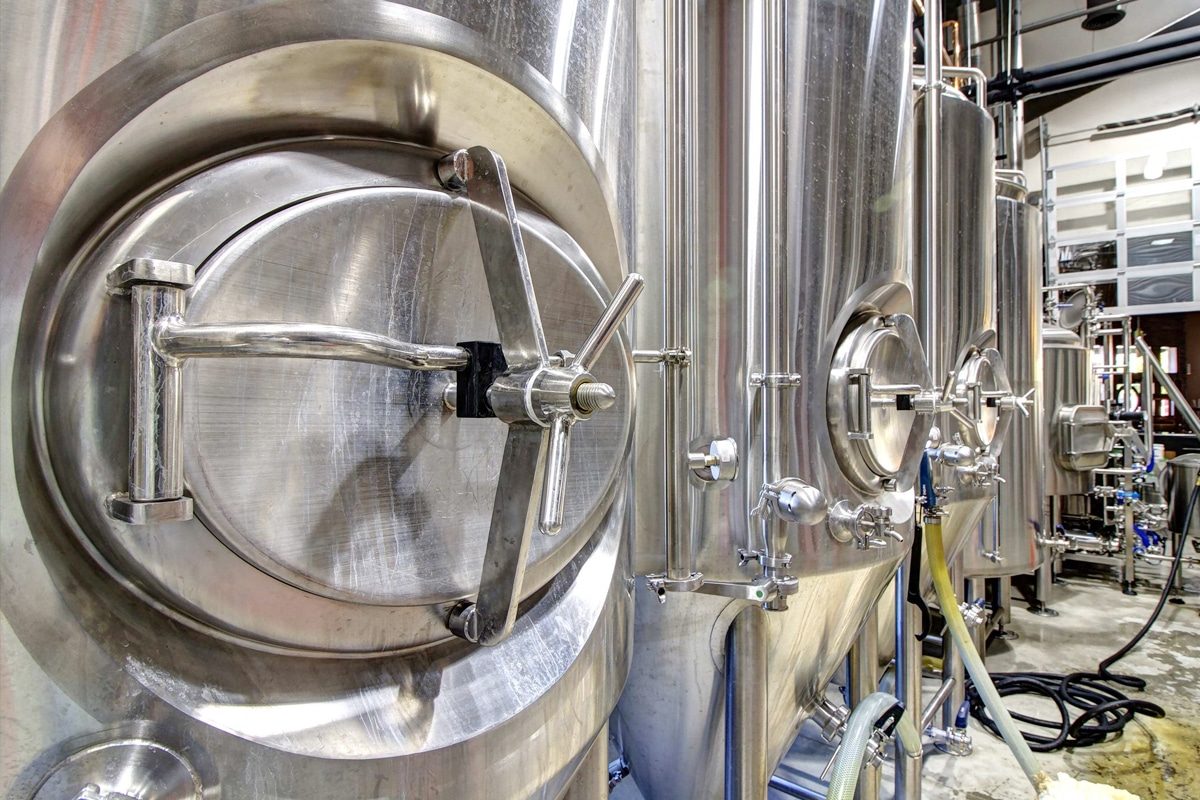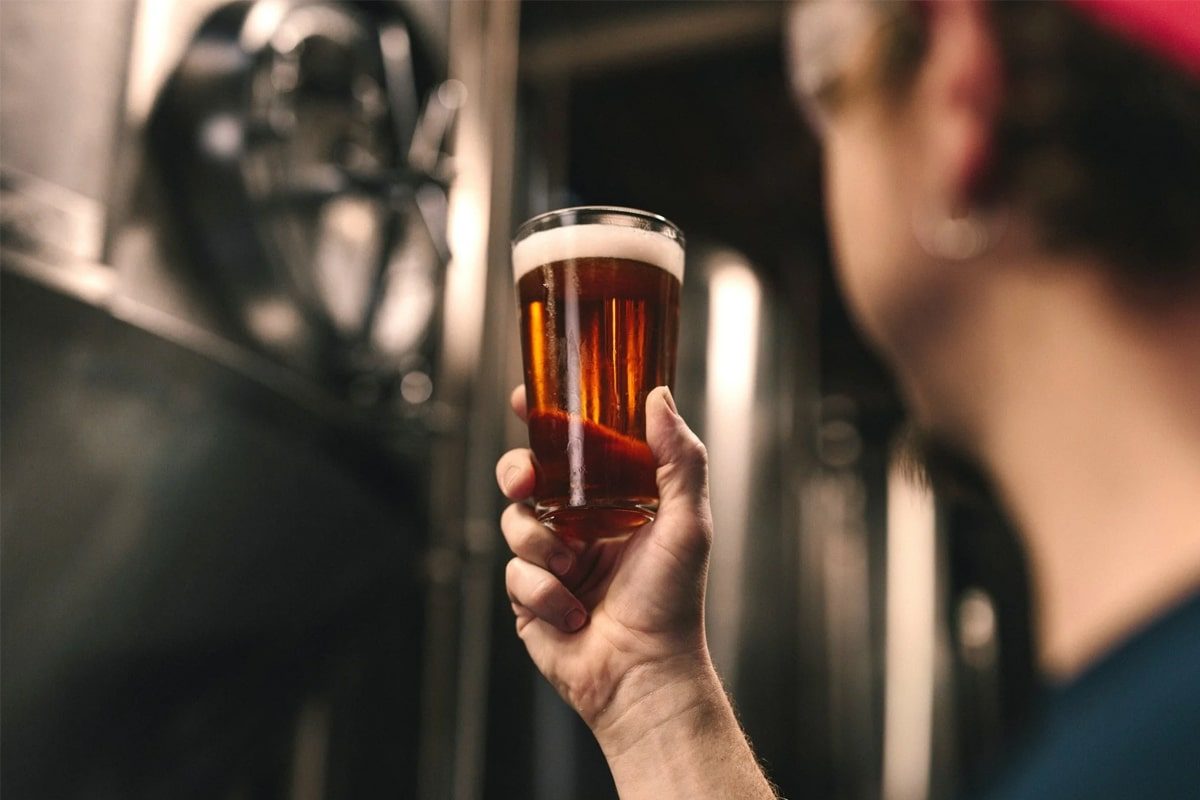
How Does The Brewing Process Work?
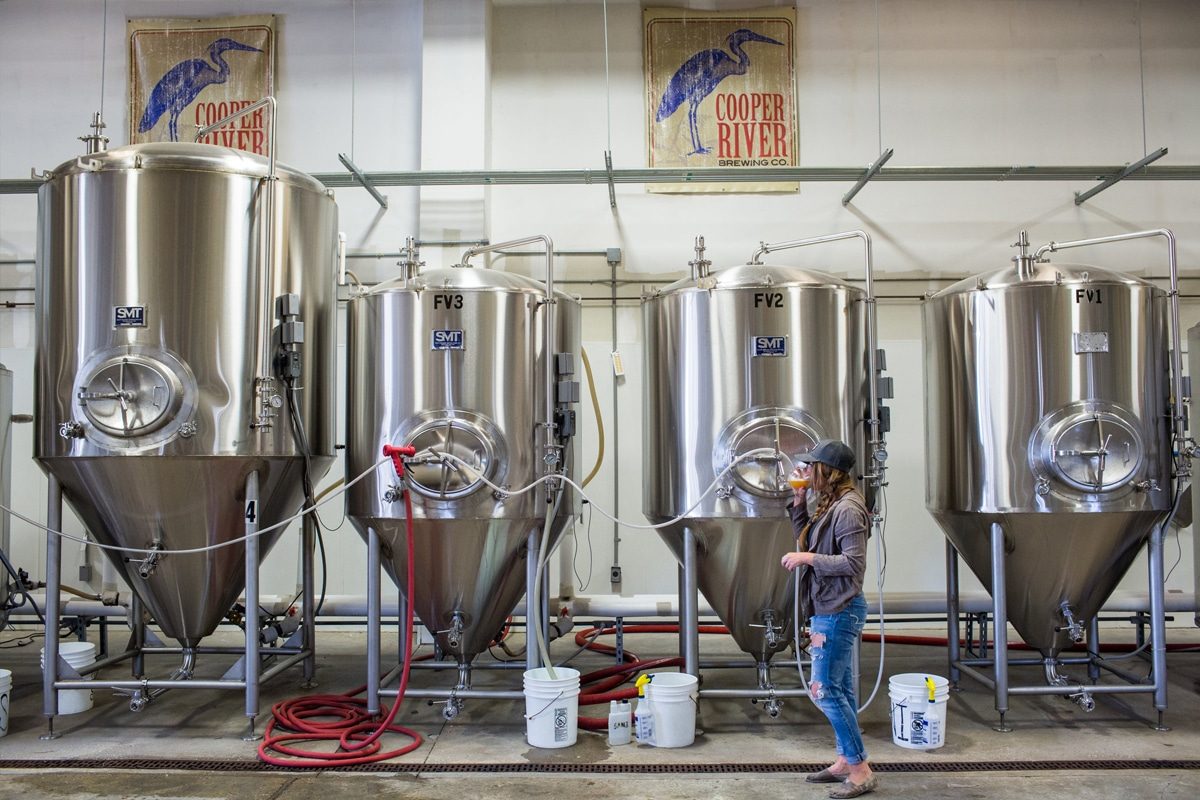
Introduction to Brewing
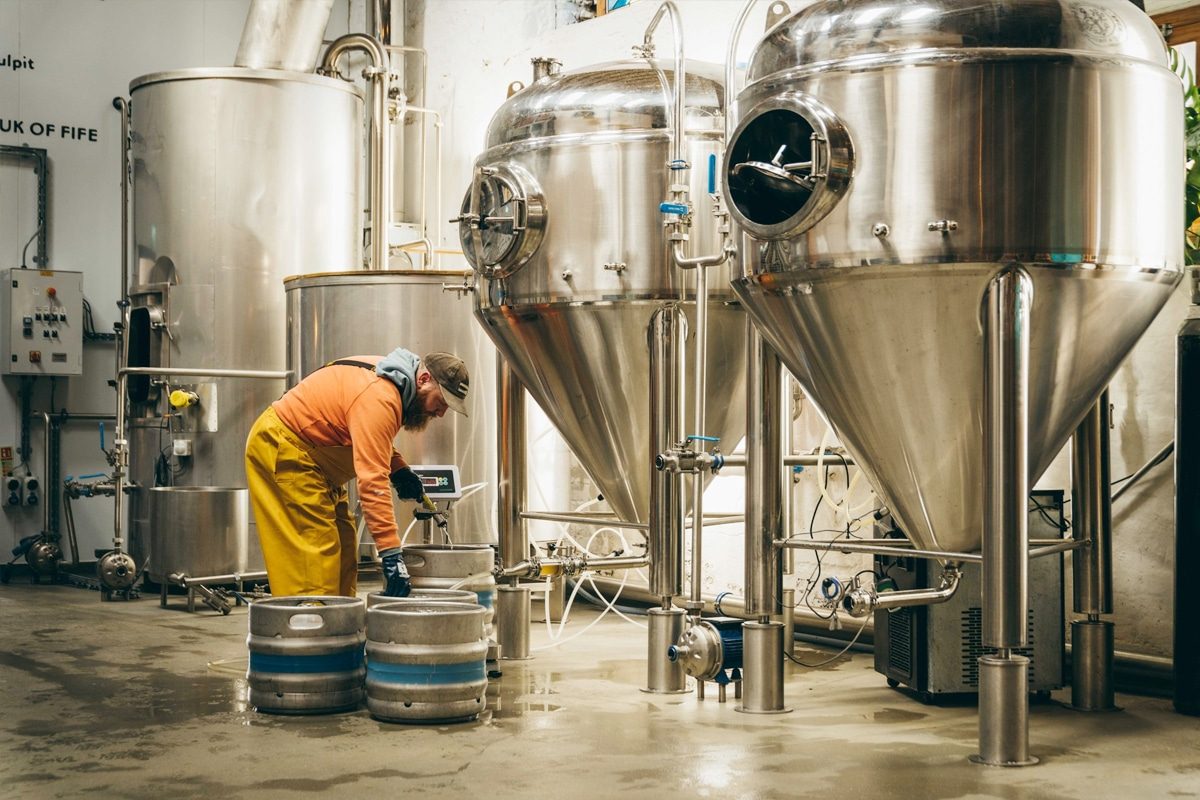
Ingredients of Beer
Water
Water is the most abundant ingredient in beer, typically making up 90-95% of the final product. Its quality and composition are crucial as they can significantly affect the brewing process and the beer’s taste. Key factors include:
- Mineral Content: Minerals such as calcium, magnesium, and bicarbonate influence the water’s pH and hardness, affecting the enzymatic activity during mashing and the hop bitterness during boiling.
- pH Levels: The optimal water pH for brewing is around 5.2-5.5. Proper pH levels ensure efficient enzymatic reactions and extraction of flavors.
- Purity: Water must be free of contaminants and unwanted chemicals, such as chlorine and chloramine, which can impart off-flavors.
Malt
Malt is primarily sourced from barley, although other grains like wheat, rye, and oats can also be used. Malt provides the fermentable sugars necessary for alcohol production and contributes to the beer’s color, flavor, and body.
- Malting Process: Barley grains are soaked in water (steeping), allowed to germinate (germination), and then dried in a kiln (kilning). This process develops enzymes that convert starches into fermentable sugars during mashing.
- Flavor Contribution: Malt imparts flavors ranging from sweet and biscuity to rich and roasted, depending on the type and degree of killing.
Hops
Hops are the flowering cones of the hop plant (Humulus lupulus) and are primarily responsible for the bitterness, flavor, and aroma of beer. They also act as a natural preservative.
- Bittering Hops: Added early in the boil, these hops provide bitterness to balance the sweetness of the malt.
- Flavor and Aroma Hops: Added later in the boil or during fermentation (dry hopping), these hops impart a range of flavors and aromas, from floral and citrusy to piney and spicy.
- Alpha Acids: The primary compounds in hops that contribute bitterness. The higher the alpha acid content, the more bitterness the hops will impart.
- Essential Oils: These volatile compounds are responsible for the hop’s aroma and are preserved by adding hops late in the brewing process.
Yeast
Yeast is the microorganism responsible for fermentation, converting fermentable sugars into alcohol and carbon dioxide. There are two main types of yeast used in brewing: ale yeast and lager yeast.
- Ale Yeast: Top-fermenting yeast that works at warmer temperatures (15-24°C). It typically ferments quickly and imparts fruity and complex flavors. It is used in a wide range of beer styles, including pale ales, stouts, and IPAs.
- Lager Yeast: Bottom-fermenting yeast that works at cooler temperatures (7-13°C). It ferments more slowly and produces a clean, crisp taste with fewer fruity esters. It is used in lagers, pilsners, and bocks.
- Fermentation Byproducts: Yeast produces various byproducts during fermentation, including esters, phenols, and other compounds that contribute to the beer’s flavor profile. Proper yeast management and fermentation conditions can help achieve the desired flavor.
Each of these ingredients—water, malt, hops, and yeast—plays a vital role in the brewing process. By carefully selecting and balancing these components, brewers can create a vast array of beer styles, each with its unique characteristics and flavors. If you want to know more about beer ingredients, you can read the following article: “What Ingredients Are Needed To Brew Beer?“.
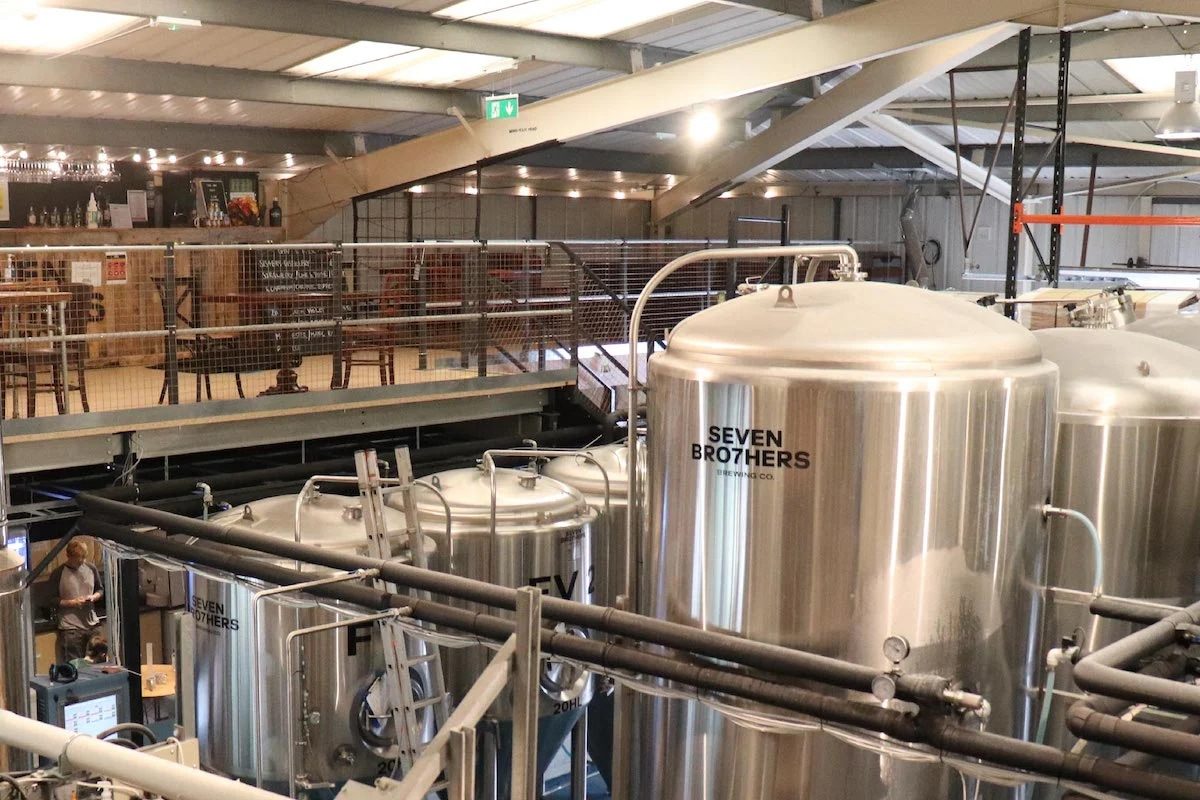
The Brewing Process
Malting
Malting is the initial step where barley grains are prepared for brewing. This process involves three main stages:
- Steeping: Barley grains are soaked in water for 2-3 days to absorb moisture, triggering germination.
- Germination: The soaked grains are spread out and allowed to germinate over 4-6 days. During this time, enzymes develop that convert the grain’s starches into fermentable sugars.
- Kilning: Germination is halted by drying the grains in a kiln. The temperature and duration of kilning influence the malt’s color and flavor, ranging from pale malts to dark, roasted varieties.
Milling
Mashing
Mashing is where the milled grains are mixed with hot water in a mash tun to create a thick, porridge-like mixture. This process activates enzymes that convert starches into fermentable sugars, producing a sugary liquid called wort. The mash is typically held at specific temperatures to optimize enzyme activity:
- Beta-glucan Rest (35-45°C): Breaks down beta-glucans to improve wort filtration.
- Protein Rest (45-55°C): Breaks down proteins, enhancing head retention and clarity.
- Saccharification Rest (60-70°C): Converts starches into fermentable sugars.
Lautering
Lautering is the process of separating the wort from the spent grain husks. It involves:
- Mashout: Raising the mash temperature to around 75-78°C to halt enzymatic activity and make the wort more fluid.
- Recirculation: Clarifying the wort by recirculating it through the grain bed.
- Sparging: Rinsing the grain bed with hot water to extract the remaining sugars. The resulting liquid wort is collected and transferred to the boil kettle.
Boiling
Boiling the wort serves several purposes, including sterilization, hop addition, and wort concentration. This stage typically lasts 60-90 minutes:
- Sterilization: Boiling kills any unwanted microorganisms.
- Hop Addition: Hops are added at various stages of the boil to impart bitterness, flavor, and aroma. Bittering hops are added early, flavor hops midway, and aroma hops towards the end.
- Wort Concentration: Evaporation of excess water concentrates the wort.
Cooling
Fermentation
Fermentation is the process where yeast converts fermentable sugars in the wort into alcohol and carbon dioxide, producing beer:
- Pitching Yeast: Adding yeast to the cooled wort in a fermentation vessel.
- Primary Fermentation: Yeast ferments the sugars, producing alcohol, CO2, and various flavor compounds. This phase usually lasts 1-2 weeks.
- Secondary Fermentation: The beer may be transferred to another vessel for further maturation and clarification, lasting several weeks to months.
Conditioning
Conditioning is the maturation phase where the beer develops its final flavor, carbonation, and clarity:
- Maturation: Aging the beer to allow flavors to meld and mature.
- Carbonation: Achieved through natural methods (adding priming sugar for bottle conditioning) or forced carbonation (adding CO2 directly).
- Clarification: Remove any remaining yeast and particles through filtration or fining agents.
Filtration and Clarification
Filtration and clarification ensure the beer is clear and free of unwanted particulates:
- Filtration: Passing the beer through filters to remove yeast, proteins, and other solids.
- Fining: Adding agents like isinglass or Irish moss to bind with and settle out suspended particles.
Carbonation
Packaging
Packaging is the final step, preparing the beer for distribution and consumption:
- Kegging: Filling kegs for draft service.
- Bottling/Canning: Filling bottles or cans, then sealing, labeling, and packaging them.
- Quality Control: Testing each batch for consistency, flavor, and carbonation levels before release.
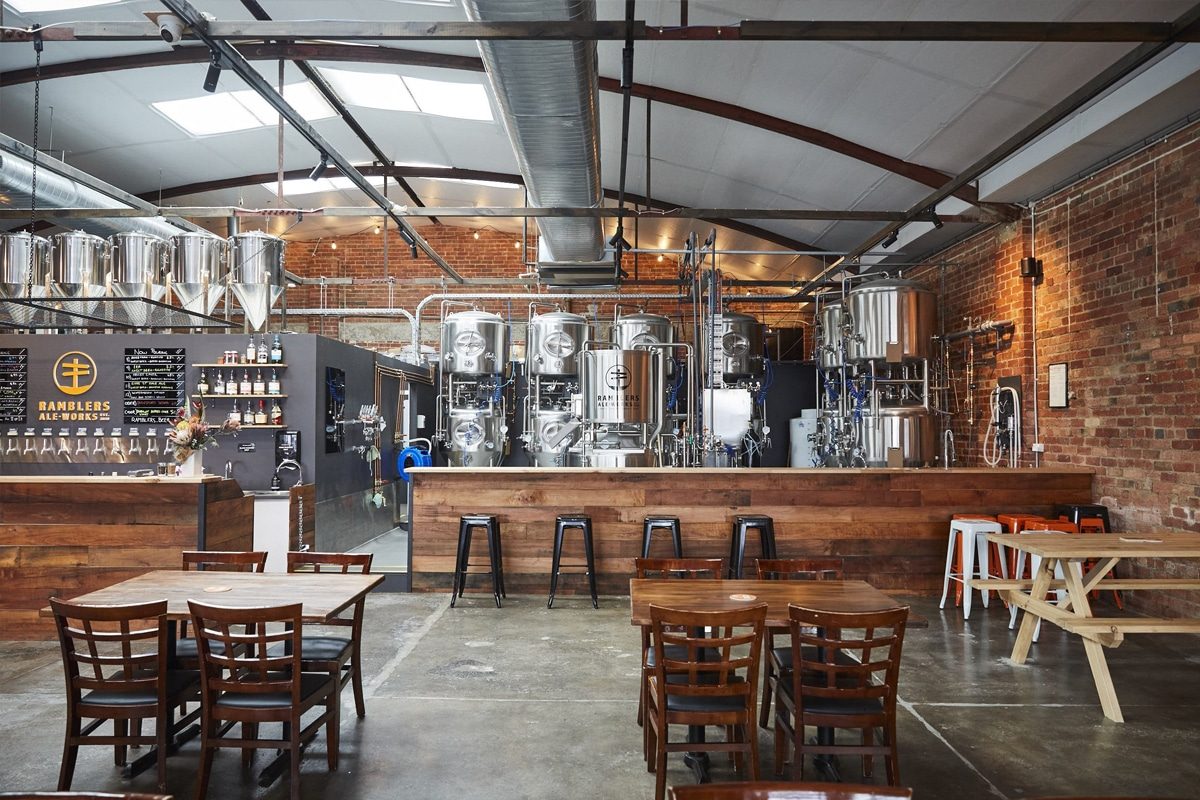
Brewing Different Styles of Beer
Ales VS Lagers
Ales
- Yeast: Ales use top-fermenting yeast (Saccharomyces cerevisiae) that ferments at warmer temperatures, typically between 15-24°C (59-75°F).
- Fermentation: The warmer fermentation temperatures result in a quicker fermentation process, often completed in just a few days to a week.
- Flavor Profile: Ales tend to have a more complex and robust flavor profile with fruity and spicy notes due to the esters and phenols produced during fermentation.
- Styles: Common ale styles include Pale Ale, India Pale Ale (IPA), Stout, Porter, Belgian Ale, and Wheat Beer.
Lagers
- Yeast: Lagers use bottom-fermenting yeast (Saccharomyces pastorianus) that ferments at cooler temperatures, typically between 7-13°C (45-55°F).
- Fermentation: The cooler fermentation temperatures lead to a slower and longer fermentation process, often taking several weeks to months.
- Flavor Profile: Lagers are known for their clean, crisp, and smooth taste with subtle flavors, as the cooler fermentation temperatures inhibit the production of esters and phenols.
- Styles: Common larger styles include Pilsner, Helles, Dunkel, Bock, and Märzen.
Specialty Beers
Fruit Beers
- Ingredients: Fresh fruits, fruit purees, or extracts are added during fermentation or conditioning.
- Flavor Profile: These beers have a pronounced fruit flavor and aroma, balancing the sweetness and acidity of the fruit with the malt and hop characteristics.
Spiced and Herb Beers
- Ingredients: Spices, herbs, and botanicals such as coriander, ginger, pepper, and lemongrass are used to enhance the beer’s flavor.
- Flavor Profile: These beers can have complex and aromatic profiles, with the added spices and herbs complementing the base beer style.
Sour Beers
- Fermentation: Sour beers are typically fermented with wild yeast strains (such as Brettanomyces) and bacteria (such as Lactobacillus and Pediococcus) that produce lactic acid and other organic acids.
- Flavor Profile: These beers are tart and tangy, with varying levels of acidity. Common sour beer styles include Berliner Weisse, Gose, Lambic, and Flanders Red Ale.
Barrel-Aged Beers
- Process: Beer is aged in barrels previously used for aging wine, whiskey, or other spirits. The beer absorbs flavors from the barrel, including oak, vanilla, and residual alcohol.
- Flavor Profile: Barrel-aged beers often have complex and layered flavors, with notes of wood, vanilla, caramel, and the previous contents of the barrel.
Smoked Beers
- Ingredients: Smoked malt, where the malted barley is dried over an open flame or smoke, is used to impart a smoky flavor.
- Flavor Profile: These beers have a distinct smoky aroma and taste, reminiscent of smoked foods. Rauchbier is a traditional German smoked beer style.
Hybrid Beers
- Brewing Techniques: Hybrid beers combine elements of both ale and lager brewing techniques, such as fermenting ale yeast at cooler temperatures or using lager yeast at warmer temperatures.
- Styles: Common hybrid styles include Kölsch and California Common (Steam Beer), which blend the characteristics of both ales and lagers.
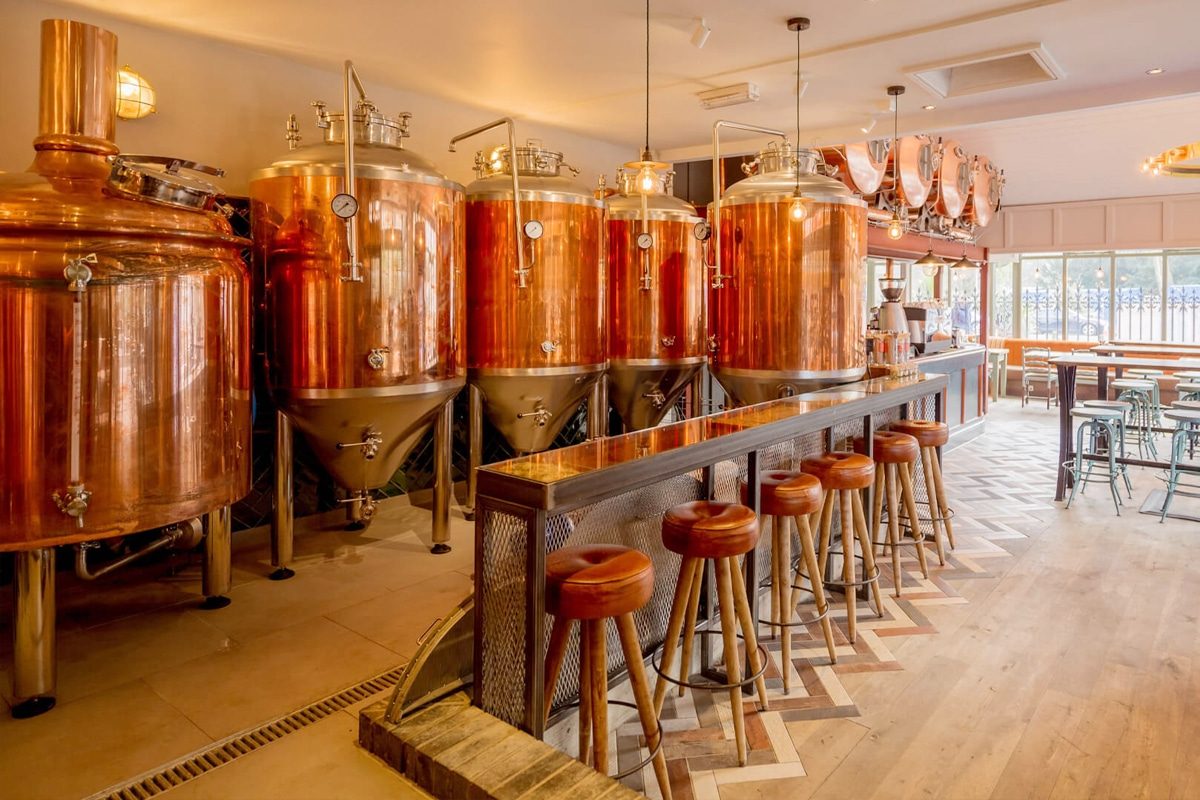
Quality Control in Brewing
Sensory Analysis
Sensory analysis involves the systematic evaluation of beer’s sensory characteristics by trained panels or individual tasters. This process helps identify any deviations from the desired flavor profile and ensures consistency across batches.
- Aroma: Evaluating the beer’s aroma is crucial as it provides the first impression of the beer. Tasters assess the presence and balance of hop aromas, malt sweetness, yeast esters, and any off-flavors.
- Appearance: The beer’s appearance, including its color, clarity, and head retention, is examined. The consistency of these visual aspects helps attract consumers.
- Flavor: Tasters evaluate the balance of sweetness, bitterness, and other flavor components. They check for the presence of off-flavors, such as diacetyl (buttery), DMS (cooked corn), or oxidation (stale/cardboard).
- Mouthfeel: The body, carbonation level, and overall texture of the beer are assessed to ensure they match the intended style.
- Consistency: Sensory panels compare the current batch to previous batches or a standard reference to ensure consistency and detect any variations.
Laboratory Testing
Laboratory testing involves the use of scientific methods and instruments to analyze the chemical and microbiological properties of beer. This ensures that the beer is safe for consumption and meets quality standards.
- Gravity and Alcohol Content: Specific gravity measurements are taken to determine the sugar content before and after fermentation. This helps calculate the alcohol content and ensures the beer has the intended strength.
- pH Levels: Monitoring the pH throughout the brewing process is crucial for enzyme activity during mashing, yeast health during fermentation, and the overall stability of the beer.
- Bitterness (IBU): The International Bitterness Units (IBU) measure the concentration of hop-derived bitter compounds in the beer. Consistent IBU levels maintain the desired bitterness.
- Microbiological Testing: Samples are tested for the presence of unwanted microorganisms, such as wild yeast and bacteria, which can spoil the beer or cause off-flavors. Regular microbiological testing ensures the beer remains uncontaminated.
- Color (SRM/EBC): The Standard Reference Method (SRM) or European Brewery Convention (EBC) method measures the beer’s color. Consistency in color is important for consumer expectations and product branding.
Sanitation and Hygiene
Sanitation and hygiene are fundamental to producing high-quality beer and preventing contamination. Proper cleaning and sanitation protocols help maintain all equipment, surfaces, and environments involved in brewing.
- Cleaning: Effective cleaning removes organic material and residues from brewing equipment. Brewers use various cleaning agents, such as alkaline cleaners, to dissolve and remove buildup.
- Sanitizing: After cleaning, the equipment is sanitized to kill any remaining microorganisms. Common sanitizers include iodine-based solutions, peracetic acid, and quaternary ammonium compounds.
- Sterilization: In some cases, particularly for packaging and fermenting equipment, sterilization using high heat or chemical sterilants may be required to ensure complete microbial elimination.
- Personal Hygiene: Brewers must follow strict personal hygiene practices, including regular hand washing, wearing clean clothing, and using gloves and hairnets to prevent contamination.
- Environmental Control: The brewing environment must be kept clean and controlled. This includes regular cleaning of floors, walls, and surfaces, as well as maintaining proper ventilation and pest control measures.
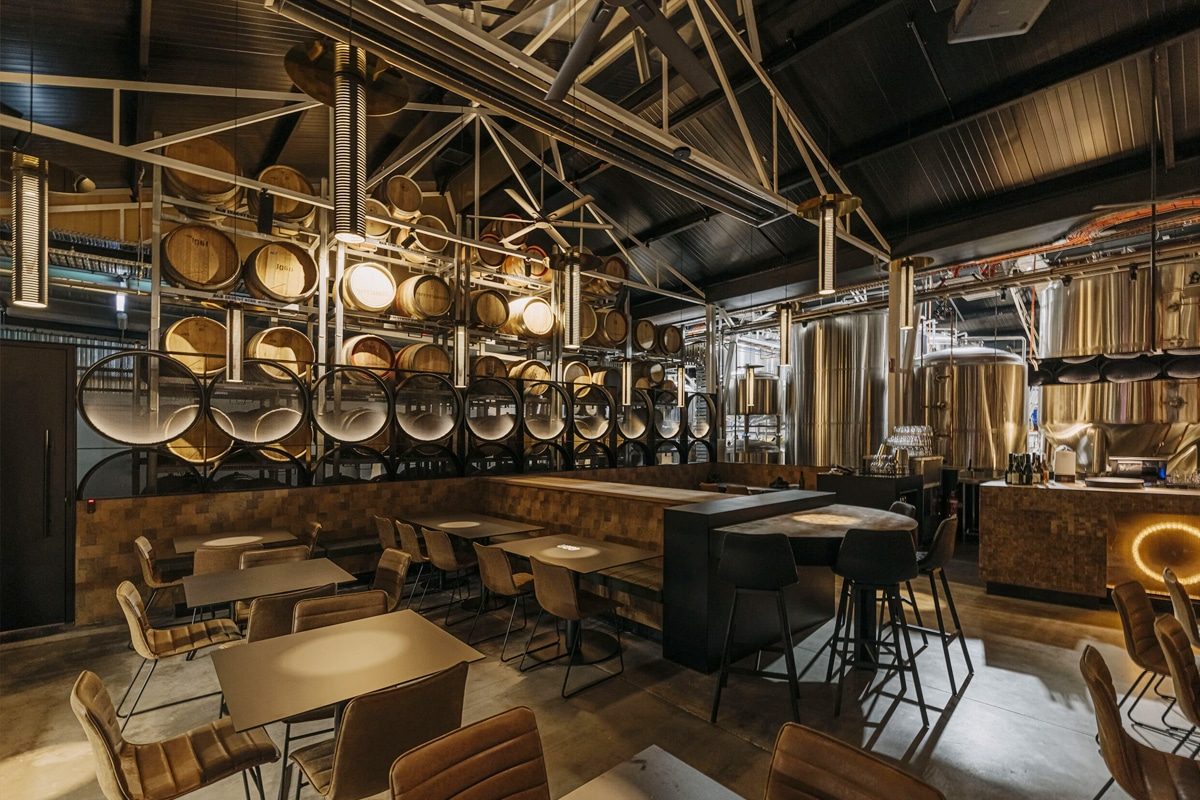
Summary
